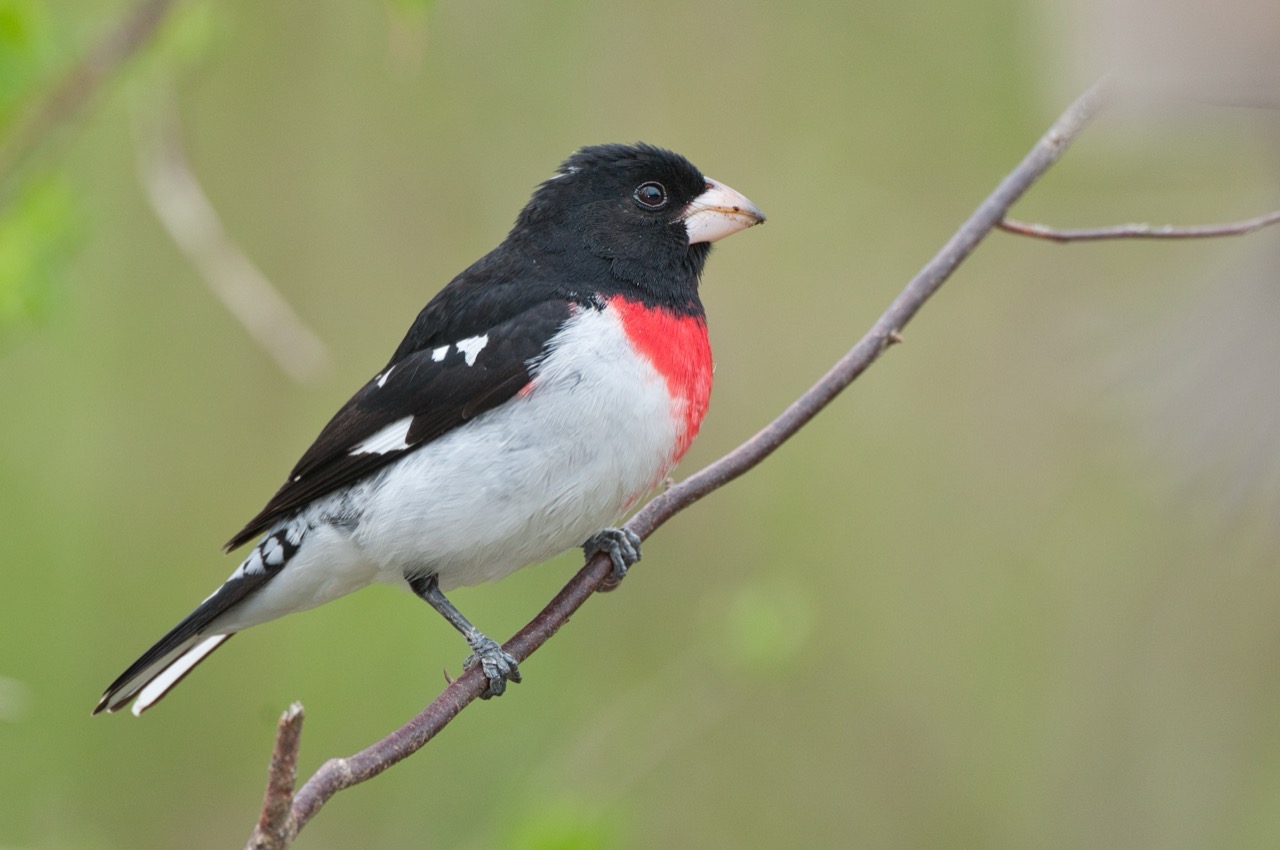The Rose-breasted Grosbeak, known scientifically as Pheucticus ludovicianus, is a stunning bird that captivates birdwatchers and nature enthusiasts alike. This striking species is not only admired for its vivid plumage but also cherished for its melodious song, making it a beloved fixture in the forests and gardens across North America. As we explore the characteristics and behaviors of this enchanting bird, it becomes evident why the Rose-breasted Grosbeak holds a special place in the hearts of those who observe it.
Characteristics / Physical Description
The Rose-breasted Grosbeak is easily identifiable by its contrasting colors and robust size. Males boast a brilliant rose-red patch on their breast, set against a black and white body, while females and juveniles display a more subdued brown streaked appearance with hints of the iconic rosy breast. Typically, these birds measure about 7 to 8 inches in length, featuring a large beak that aids in their varied diet.
Taxonomy and Classification
This species belongs to the family Cardinalidae, which includes cardinals and other grosbeaks. The Rose-breasted Grosbeak is one of the four species in the genus Pheucticus, characterized by their large, seed-cracking beaks and vibrant plumage. Their close relatives include the Black-headed Grosbeak and the Blue Grosbeak.
Behavior and Social Structure
Rose-breasted Grosbeaks are known for their sociable nature during the breeding season, often forming monogamous pairs that share responsibilities of nest building and feeding the young. Outside breeding season, they can be found in mixed-species flocks. Their song is a distinctive aspect of their behavior, with males singing a sweet, melodious tune to assert territory and attract mates.
Habitat and Distribution
Native to North America, these birds breed predominantly in deciduous forests across the northeastern U.S. and Canada, migrating to Central and South America during the winter. Their habitat preferences include wooded areas rich in small trees and shrubs, providing ample cover and food sources.
Diet and Feeding Habits
Rose-breasted Grosbeaks are omnivores, feeding on a mix of insects, seeds, and fruits. Their strong beaks are perfectly adapted for cracking seeds and snipping at fruit, while their agile foraging skills allow them to glean insects from foliage, providing a balanced diet throughout the seasons.
Breeding and Reproduction
Breeding season sees Rose-breasted Grosbeaks building nests in the forks of trees, where females lay three to five eggs. Both parents share the duty of incubating the eggs and feeding the altricial (helpless) chicks. This cooperative parenting helps ensure higher survival rates for the offspring.
Relationship with Humans
The Rose-breasted Grosbeak contributes to ecosystem health by helping control insect populations and dispersing seeds. Birdwatchers and naturalists especially value these birds for their beauty and song, often encouraging their presence by setting up bird feeders with seeds suited to their diet.
Evolutionary History
Fossil records and genetic studies suggest that the genus Pheucticus diverged from other cardinalids several million years ago, adapting over time to exploit different ecological niches in North America. Their evolution showcases the adaptability and resilience of this group of birds.
In conclusion, the Rose-breasted Grosbeak not only adds splendor to its natural surroundings but also plays a crucial role in the ecological community. Its presence is a reminder of the beauty and complexity of avian life, urging us to appreciate and conserve the natural world.

